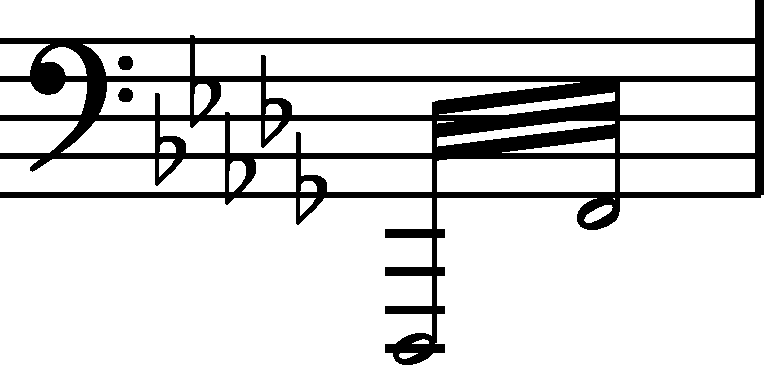



|
b. 257
|
composition: Op. 2, Variations, complete
..
The first and last notes of the group of 4 small notes ending the trill are written in A (→GE1→EE,GE2→GE3,FESB) without accidentals. The use of G at the beginning of this group, natural in this context, is confirmed by the category imprint: Interpretations within context; Differences between sources issues: Cautionary accidentals , Errors of A , Authentic corrections of FE , Last key signature sign |
|||
|
b. 257
|
composition: Op. 2, Variations, complete
..
In A there are no accidentals to the 2nd and 3rd R.H. chords. The missing accidentals were gradually added by the subsequent editions – in GE1 (→GE2) both accidentals to the 2nd chord were added, while in EE1 a category imprint: Interpretations within context; Differences between sources issues: EE revisions , Accidentals in different octaves , GE revisions , Authentic corrections of FE , FE revisions , Inaccuracies in A |
|||
|
b. 258
|
composition: Op. 2, Variations, complete
..
The minim tremolo was added – certainly by Chopin – in the stage of proofreading FE1. We replace the "tim" abbreviation used there with the contemporary "Timp." The musical notation is of a conventional nature – Chopin must have meant an octave tremolando category imprint: Differences between sources issues: Authentic corrections of FE |
|||
|
b. 259
|
composition: Op. 2, Variations, complete
..
In the main text we add a cautionary category imprint: Editorial revisions |
|||
|
b. 259
|
composition: Op. 2, Variations, complete
..
The version of notation of FE and EE, in which the semiquaver of the top voice was placed after the 3rd quaver of the triplet in the remaining voices, is contrary to the Chopinesque understanding of this combination of rhythms – see bars 45-46. Interestingly, the engraver of FE consistently forced his version of notation (contrary to the basis), whereas the engraver of EE decided to depart from the basis only here. category imprint: Differences between sources issues: EE revisions , FE revisions |

 of
of  to g
to g – in the stage of proofreading
– in the stage of proofreading  . This is not an accurate reproduction of the timpani part either, since in the timpani the tremolo lasts only a crotchet and ends with a single note on the 4th beat of the bar (quaver and rest). The remaining sources of the piano part contain here only the solo voice rest. See also bar 260. The described addition was also introduced by
. This is not an accurate reproduction of the timpani part either, since in the timpani the tremolo lasts only a crotchet and ends with a single note on the 4th beat of the bar (quaver and rest). The remaining sources of the piano part contain here only the solo voice rest. See also bar 260. The described addition was also introduced by